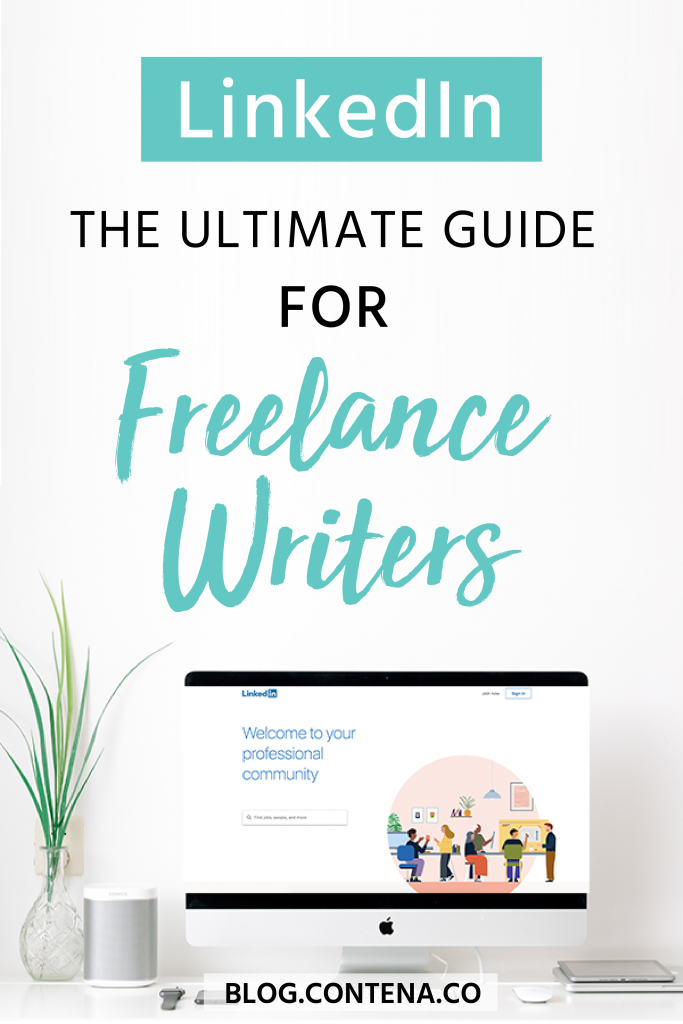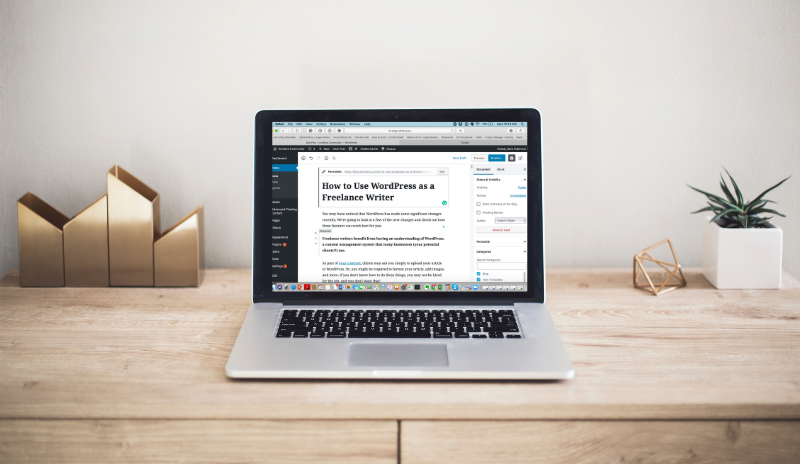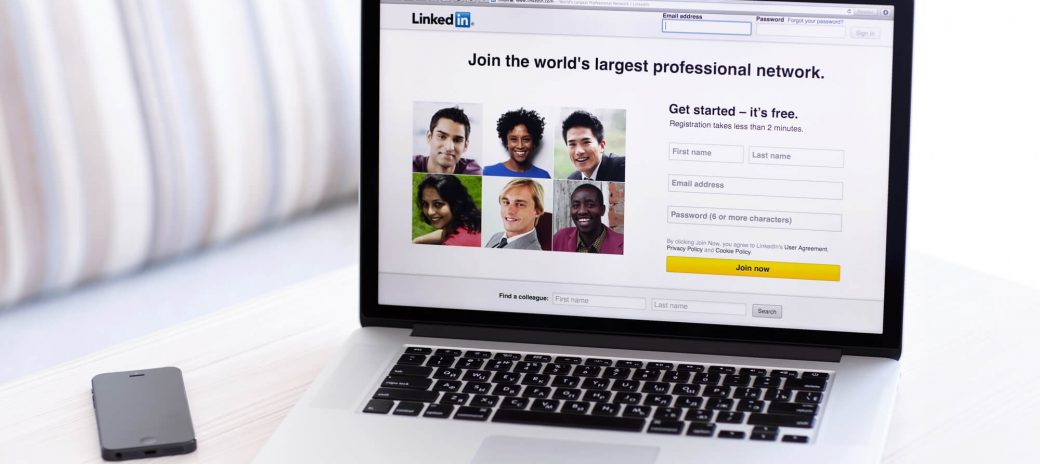So, you’ve decided you want to become a freelance writer, which is great! But, this then begs the question; how do I bag my first client?
The simple answer: You’ll need to start marketing yourself and your services. There’s a good chance you’ll already have applied for gigs advertised on freelance writing job boards (maybe you’re using Contena?!), you might have even started cold e-mailing potential clients, but have you added LinkedIn to your marketing arsenal?
If you have, have you optimized your profile to attract freelance writing clients? If not, that needs to change- and here’s why.
Why is LinkedIn Essential for Freelance Writers?
That stats speak for themselves; 45% of people using LinkedIn have jobs in ‘upper management’.
Let that sink in for a sec.
By ‘upper management’ we’re talking about directors, managers, vice presidents, etc.
In short, LinkedIn is where the decision-makers hang out!
So, if you’re not making a mark on LinkedIn you could be missing out on valuable opportunities that could lead you to your next client.
How Do I Attract Clients?
As we’ve already said, if you want to start attracting prospects, you need to optimize your LinkedIn profile. This might sound complicated, but trust us, it’s much simpler than it sounds.
This is what successful freelance writer, Lindy Alexander, had to say on the subject:
“LinkedIn is such a great (and underutilized) platform for freelancers. With a strong bio and description of what services you offer and how they help your target clients, together with actively commenting and connecting with people in your areas of specialization, LinkedIn is a gold mine where you can find high-paying clients.”
Lindy Alexander
Your Headline
Crafting a compelling headline is imperative. It’s the first thing people notice when they click on your LinkedIn profile, so make it count.
Your copy needs to do two things in the space of 120 characters:
- Create a killer first impression
- Communicate what you have to offer
Now, this might sound like a tall order, so we encourage you to focus on the kinds of things your ideal clients are specifically searching for.
Needless to say, broad search terms like ‘writer’ or ‘blogger’ are more competitive to rank for. So, there’s a good chance you won’t appear at the top of your prospects LinkedIn search results. Instead, get real specific with your niche and the kinds of skills you have to offer.
For example-
- Business writer
- Freelance content strategist
- Wedding blogger
You get the idea!
Strategically using keywords describing who you and what you do works wonders for attracting clients in your niche.
This is NOT the place to show prospects how clever you are with words. As tempting as it is to publish something like; Goddess of the English language or Master of freelance writing, DON’T. Your headline needs to focus on keywords your clients are actually searching for.
Top Tip: ALWAYS include the word ‘freelance,’ most job seekers are looking for something full-time, so you need to distinguish yourself from that.
Your Header Image
Use a custom header image, don’t just leave the standard blue header that comes as default. There’s so much you can do with this space:
- Brand yourself
- List some of the clients you’ve already worked for
- Insert your contact info
If you’re not much of a designer, never fear. You can use Canva to design your ideal header image. This is a free resource providing tons of templates with the correct dimensions for a LinkedIn header. With just a few clicks of a button, you can insert logos of your clientele, upload a photo of yourself, use colors to reflect your brand, etc.
Your Profile Photo
Out of all the social media platforms on LinkedIn, this is by far the most professional, and your profile photo needs to reflect this. This isn’t the place to plaster a picture of you and your friends on a night out or a shot of you and your pug.
Your image should scream business-casual wrapped up in a smile.
You don’t have to crack out a suit, you just want prospects to take you seriously and to reach out and contact you; you can use your profile picture to help you achieve that.
If you’re camera shy, you might be tempted not to upload a snap of yourself. However, we urge you to bite the bullet and use a photo. After all, LinkedIn users with profile photos achieve as many as 21x more views and 36x messages!
Your recommendations
Gaining the trust of potential clients is essential. People don’t like taking risks with their money- so, if they haven’t used your services before you need to do everything you can to prove that your credible and that you’ll deliver top-notch work.
Recommendations are a surefire way of doing precisely that.
If you’ve done work for a previous client, ask them to shoot you over a quick recommendation on your LinkedIn profile. Just click the ‘ask for recommendation’ button; this is the easiest way to collect and publish their testimonial.

The summary section
Urgh.
This is the longest of all the LinkedIn sections and therefore requires the most work. Like any piece of writing, you need to hook your readers with the first line- and your summary section is no different.
First things first, make it very clear who your ideal clients are. When a prospect lands your profile, you want to confirm to them that they’re in the right place to find the kind of writing service they’re after.
Connect with the client by showing you understand their problems and highlight your most relevant experience to prove that you know how to help them with what they’re struggling with. Perhaps one of your pieces got an impressive number of social shares? Or, maybe you have some other stat that proves your content converts? Or, perhaps you’ve written for someone or have some kind of other work experience that makes you credible?
Regardless, this is the section to brag about it!
Your experience section
As time-consuming as it is you MUST list each and every one of the client’s you’ve written for as individual work experience. Don’t be tempted to lump them all together or to just list them in your summary.
This is another factor LinkedIn takes into consideration when ranking their search results. The aim of the game is to show LinkedIn your profile is the most relevant out of all your competitors for what your prospects are searching for.
By using keywords to describe the kind of work you did for each client, you’ll massively boost the likelihood of getting found.
Have You Got Any Other Tips?
We hope this blog post has you pumped to go and optimize your own LinkedIn profile. We wish you luck finding clients using this method!
Have you got any other tips for our readers? If so, we’d love to hear your thoughts in the comments box below. Let’s kickstart the convo!










